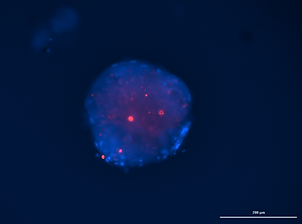SpheroFlow - seamless spheroid/tumoroid generation platform
Streamline spheroid and organoid production with a single, efficient tool
.png)
SpheroFlow single-use spheroid-generation chip
The Preci microfluidic chip operates by precisely controlling the flow of a cell-laden extracellular matrix (ECM) hydrogel and a continuous fluorinated oil phase within its microchannels to generate uniform microbeads. Cells suspended in a liquid ECM are introduced as the dispersed phase, while the continuous oil phase forms stable emulsions through the chip’s engineered channel geometry.
Magnetic stirring ensures even cell distribution, and the resulting droplets are polymerized at physiological temperature to solidify the ECM, forming stable microtissues. These microbeads are then efficiently recovered using an oleophilic absorbent and transferred into culture conditions for further growth and analysis.
Elevate your 3D cell culture workflows with Preci’s advanced microfluidic platform—engineered for researchers who demand efficiency, precision, and high-throughput results. Our system transforms the complex process of spheroid and organoid generation into a simple, automated workflow, freeing your time for what matters most—discovery and innovation.
With precise control over microtissue size, uniformity, and cell distribution, our platform ensures reliable, reproducible outcomes across experimental settings. Whether working with immortalized cell lines or primary human cells, you can achieve consistent microtissue formation, supported by optimized ECM integration and automated dispensing into 96- and 384-well plates.
The Preci microfluidic system seamlessly integrates with the Opentrons liquid handling platform to automate and streamline the entire microtissue generation workflow. Using precise robotic control, the Opentrons platform manages the dispensing of cell-laden ECM solutions into the microfluidic chip, controls reagent handling, and automates the transfer of generated microbeads into 96- or 384-well plates for incubation and analysis. This integration minimizes manual intervention, ensures high reproducibility, and enables scalable high-throughput experimentation—making the production of uniform spheroids and organoids more efficient and accessible for advanced drug screening and translational research.


Primary HCC spheroids generated using SpheroFlow technology








